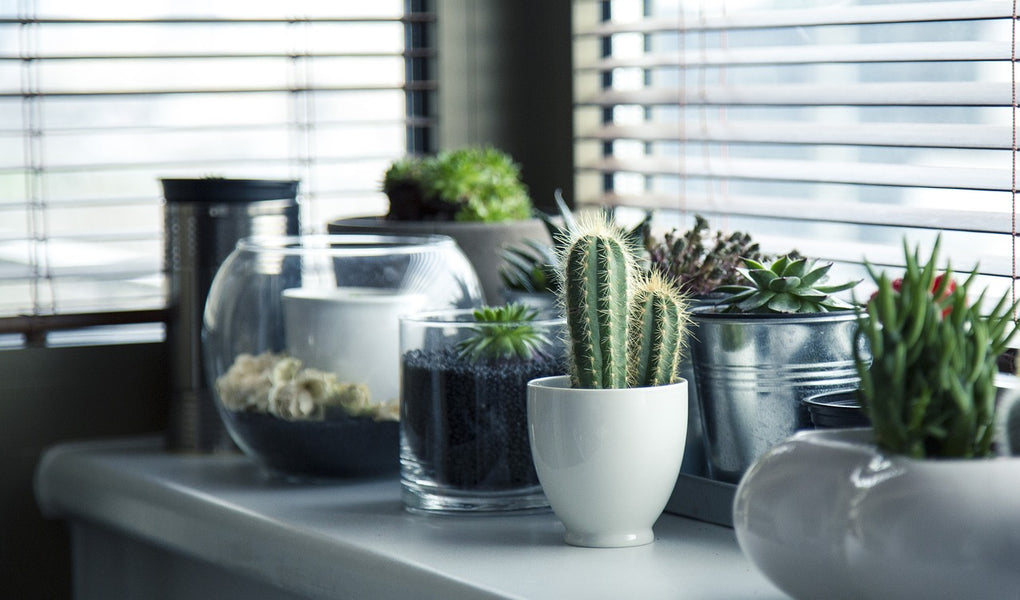
SUSTAINABLE LIVING AT HOME: 5 WAYS TO HELP YOU DO IT RIGHT
Sustainable living doesn't have to be limited to walking instead of taking the car or choosing paper grocery bags over plastic ones. There are lots of ways that you can live green even at home!
If you care about the environment and are looking for simple ways to follow a sustainable lifestyle, you've come to the right place. Here are 5 different ways to live a sustainable life and help make the world a better place to live in!
GO GREEN WITH LIGHTING
Using the right lighting fixtures and following good energy-saving habits can make a huge difference to the amount of electricity your house consumes. Start with replacing all your old bulbs with CFLs (compact fluorescent lights) or LEDs (light emitting diode) -these are not only energy efficient but also long-lasting.
Remember to dispose CFLs appropriately; they contain trace amounts of mercury so don't throw them in the trash. When buying new lighting fixtures, look for ones made from natural materials including wood, felt, or cloth, or recycled materials like glass or metal.
Try to use natural light as much as possible by keeping the blinds open during the day. If possible, consider getting a skylight or pipe sunlight in via fiber optics and such light channeling technologies.
In addition to this, use motion sensors and light dimmers as need be. And don't forget to turn off the lights when they aren't needed!
UNPLUG ELECTRONICS
Appliances such as refrigerators, dryers, computers, televisions, etc. consume a high amount of energy compared to other appliances. While you may switch off the TV, dryer, and computer when not in use, leaving these devices plugged in can still draw energy and add to your energy consumption costs.
To prevent unnecessary energy consumption, make sure you switch off and unplug electronic appliances when not in use. Don't forget items like hair dryers, mobile phone chargers, and kitchen appliances like coffee makers, blenders, and toasters!
Group similar appliances and use power strips so that plugging and unplugging isn't cumbersome. For example, you can get a power strip for your TV, stereo system, and DVD player, and another for your computer, printer, and scanner.
CHANGE LAUNDRY HABITS
There's immense potential to reduce your water usage and carbon footprint by adopting green laundry habits. Following an earth-friendly laundry regimen will also help you save personal energy and extend the life of your clothes.
Reduce the frequency of doing your laundry by wearing clothes at least twice. This doesn't mean you go around wearing sweaty gym socks and stained t-shirts! If a worn item isn't soiled and doesn't stink, you can wear it again instead of tossing it into the laundry basket right away.
When doing your laundry, select the cold wash setting. This way, you'll save energy that would have been spent on heating the water. Forego the dryer and let your clothes air-dry. Also, iron clothes only when absolutely necessary.
Furthermore, use phosphate-free and biodegradable detergents instead of conventional ones. Try using soap nuts as an alternative to detergent and vinegar in place of fabric softener.
Alternatively, put off doing the laundry at home and get it done at a laundromat near you. Lots of laundromats are embracing alternative energy so you should definitely give your local one a try. What's more, washers and dryers at laundromats are more efficient than domestic ones, meaning you'll certainly conserve energy. Just be sure to walk if the laundromat is close by instead of taking the car!
REDUCE WASTE
You can't reduce the amount of waste you generate overnight, so start by just being mindful of your waste. Consider changing shopping habits- buying in bulk translates directly to lesser packaging waste. And switching to electronic bills means less paper waste!
Simply minimizing or maximizing use of household items will also help you live a sustainable life. Using less makeup, printer paper and printer ink, toilet paper, and other items will create less waste and help conserve resources too.
Additionally, reuse items like plastic bags, containers, and whatever you can. Turn to recycling to reduce waste and maximize use of household products. Better still, make use of products that can be used over and over again-do away with paper wipes and use cloth rags, and use cloth bags instead of plastic ones!
Do upcycle whatever you can too-with a little creativity and help from the Internet, you'll be able to find plenty of uses for various household items.
GO NATURAL
Using products made of sustainable or natural materials can lessen the negative impact on the environment. As such, you might want to buy bamboo or wooden hangers instead of plastic ones, and go for the fabric lampshade instead of the PVC one.
Further to this, use natural detergents and cleaning solutions instead of buying those sold in stores. Plenty of household products like vinegar, baking soda, and more are wonderful natural cleaning agents. You can also use these as natural deodorizers!
If you have a garden or grow plants, turn kitchen scraps into compost and use it to feed plants. Doing so will not only save money but help you do your bit for the environment too.
CONCLUSION
Living a sustainable life doesn't mean you have to spend on expensive technologies or do things that make you uncomfortable-like not turning the thermostat up when you're cold or walking to someplace when you can't.
With the tips given here, you now know that leading a sustainable lifestyle is possible just by being mindful of what you do and making wise choices. So start doing what's right and you're sure to make this world a better place!

